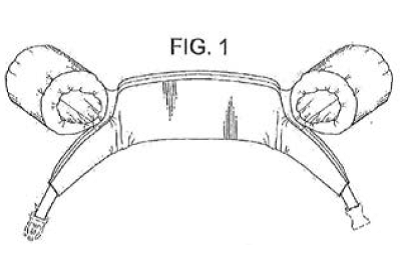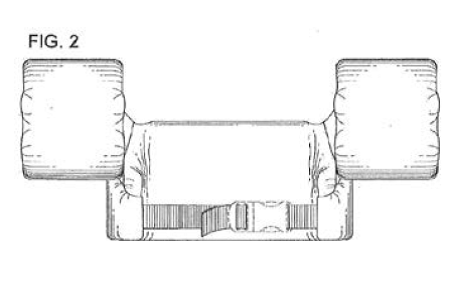Sport Dimension v. Coleman
By: Perry J. Saidman
Following its extremely cogent opinion in Ethicon v. Coviden (discussed in an earlier edition of this newsletter and on our website) the Federal Circuit in Sport Dimension v. Coleman, decided April 19, 2016, rejected the district court’s claim construction that eliminated entirely consideration of two elements of the patented design that the district court had determined were “functional”. The subject of the design patent is a flotation device which includes two armbands and a tapered torso. Shown below are two figures from the design patent, and then the accused product:
The district court construed the claim as:
“The ornamental design for a personal flotation device, as shown and described in Figures 1-8, except the left and right armband, and the side torso tapering, which are functional and not ornamental.”
The Federal Circuit, in an analysis that tracks Ethicon, once again distinguished Oddz-On and Richardson, saying both were really about eliminating design concepts from claim construction and focusing on the appearance of the various admittedly-functional elements. Essentially, the Court was rebuking the mistake often made by lower courts that just because an element performs a function, it is impermissibly “functional” within the meaning of the law and should be disregarded. Instead the Court noted again that the articles underlying design patent claims necessarily serve a utilitarian purpose, and cannot be disqualified or narrowed on that basis. Ethicon and now Sport Dimension give district courts clear guidance on this issue and hopefully district courts will put it to good use.
The only troubling area of the opinion was the Court’s approval of the district courts’s analysis under PHG v. St. John’s, an outlier of an opinion that relied on dicta from Berry Sterling that improperly recited the factors for trade dress functionality, which are by and large irrelevant to a court’s consideration of design patent functionality. After reviewing with approval the lower court’s analysis under PHG (which the Court noted was about validity, not claim construction), the Court returned to Ethicon and rejected the claim construction. Hopefully, under the right set of facts, the Court will put a dagger through the heart of PHG, so that district courts can focus on the major, if not only, relevant factor in determining whether a design is impermissibly functional: the existence of alternate designs that perform substantially the same or similar function to that of the claimed design. The existence of alternative designs constitutes the most objective evidence available that a claimed design is not dictated by function, and is therefore not using the design patent to monopolize that function.



